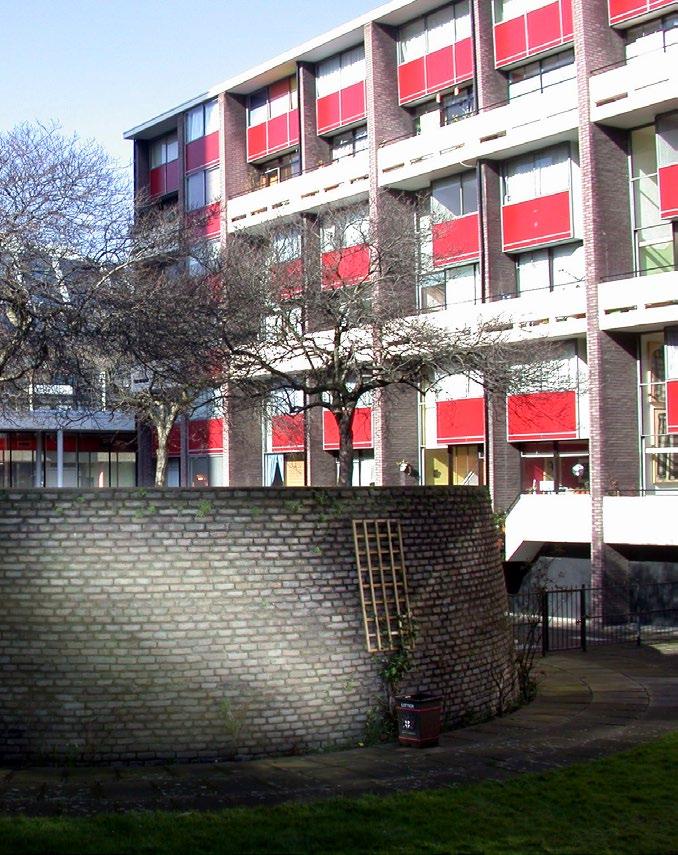Implementation



Community Infrastructure Levy (CIL)
15.1.0 The 2008 Planning Act and Community Infrastructure Levy Regulations 2010 (as amended) set out the legislative and regulatory basis for the CIL. They provide for the setting and collection of a statutory charge levied on development, intended to address the infrastructure needs arising out of the implementation of the City Plan. CIL is the primary mechanism for seeking contributions from developers towards the provision of new infrastructure. Infrastructure is defined broadly in the Act to include transport, flood defences, schools and other educational facilities, medical facilities, sporting and recreational facilities and open spaces.
15.1.1 CIL Regulations indicate that planning obligations may only constitute a reason for granting permission if the planning obligation is:
X necessary to make the development acceptable in planning terms;
X directly related to the development; and
X fairly and reasonably related in scale and kind to the development.
15.1.2 Planning obligations are legal agreements linked to planning permissions that regulate the way a development is undertaken, and they are used where it is not possible to regulate the permission by means of a condition. They may be in the form of in-kind benefits or a financial contribution and may be used to prescribe the nature of a development, compensate for loss or damage created by a development, or mitigate the impacts associated with the development. The level of any obligation is subject to consideration of its impact on the viability of the development proposed.
The City Corporation will seek appropriate contributions from developers to manage and mitigate the impact of development:
1. Requiring contributions through the Community Infrastructure Levy to:
a. assist in the delivery of the infrastructure necessary to support implementation of the City Plan and the City’s Transport Strategy; and
b. contribute towards the costs of Crossrail, or other strategic infrastructure, in accordance with the provisions of the Mayor of London Community Infrastructure Levy 2.
2. Requiring s106 planning obligations, having regard to the impact of the obligation on the viability of development, for:
a. site specific mitigation meeting statutory tests;
b. affordable housing;
c. training, skills and job brokerage;
d. carbon offsetting;
e. cultural provision;
f. Highways and public realm enhancements including commuted sums for maintenance;
g. local procurement in the City and neighbouring boroughs; and h. measures to enhance area-wide security, where appropriate.
3. Use of the Vacant Building Credit is not considered to be appropriate in the City of London.

15.2.0 The compact nature of the City and the intensification of development and employment place demands on the City’s services, infrastructure and environment. The City Corporation utilises the Community Infrastructure Levy (CIL) to help local infrastructure keep pace with the demands of development and attaches planning conditions and negotiates planning obligations (also known as S106 agreements) with developers, to ensure proposals are acceptable.
15.2.1 The City Corporation has adopted a CIL Charging Schedule and publishes an annual Infrastructure Funding Statement setting out the types of infrastructure or infrastructure projects that may be funded in part or in whole by CIL.
15.2.2 In line with legislative and regulatory requirements, and the provisions of the City Corporation’s CIL, planning obligations in the City will be sought for site specific mitigation, including contributions towards area-wide security measures in the City Cluster, in line with the policies set out in this Plan. Planning obligations will also be negotiated to deliver affordable housing, the provision of training and skills programmes, carbon offsetting and, where appropriate, contributions towards cultural provision. Specific requirements are set out in other policies within this Plan, particularly Policies S1, S3, VT1 and DE1. Planning obligations in the City are sought principally from commercial development, but other forms of development will also be expected to make contributions, where appropriate. Affordable housing will be required on-site on qualifying residential developments, but
exceptionally financial contributions will be sought. Financial contributions towards affordable housing will be sought from commercial development.
15.2.3 Where required, the City Corporation will seek, via s106 planning obligations, Section 278 Agreements with developers to ensure that highway works necessary to make a development acceptable are funded by the developer and implemented by the highway authority.
15.2.4 Further detail on planning obligations is set out in the Planning Obligations SPD and in the s106 Standard Template which is published on the City Corporation’s website.
15.2.5 The Vacant Building Credit is set out in national planning policy and is intended to provide an incentive to bring forward brownfield sites for development. The high cost of land in the City of London, together with high levels of demand for commercial and residential development, mean that additional incentives are not required to encourage brownfield sites to come forward for development. The use of Vacant Building Credit is therefore not considered to be appropriate within the City of London.
15.2.6 The Mayor of London Community Infrastructure Levy 2 (CIL2) was implemented from 1 April 2019. It requires development across London to make a contribution towards the funding of Crossrail 1 and Crossrail 2. The Mayor’s CIL2 sets a charging rate for all development in London, with a higher charging rate for office, retail and hotel development in Central London, including in the City of London. The Mayor’s CIL2 is payable in addition to the City of London CIL.
1. Development proposals must take full account of the policy requirements set out in this Plan and the London Plan, including financial and other requirements under the Mayoral and City of London Community Infrastructure Levy and s106 planning obligations.
2. Exceptionally, even where policy requirements have been taken into account, applicants may consider that these requirements cannot be delivered in full without adversely affecting the overall viability of a development. In these circumstances, proposals must be supported by a scheme specific viability assessment.
3. The viability assessment must be prepared in accordance with the standard methodology set out in national planning practice guidance. The price paid for a site and/or building will not be a relevant justification for not meeting Development Plan requirements.
4. Viability assessments will be made available on the Planning Register reflecting the expectation that these should be publicly available. If the applicant considers that the assessment in part or whole should be redacted for reasons of confidentiality, there will be an opportunity for the applicant to make the case. If an assessment is redacted, an executive summary will be made public.
5. The City Corporation will seek independent verification of submitted viability assessments, with the cost of verification being met by the applicant.
6. Where it is agreed that a development cannot viably deliver all required planning obligations at the date of permission, but that there are nevertheless other policy considerations which justify the approval of planning permission, the City Corporation will normally require a review of the viability information at a later stage of the development, or upon occupation.

15.3.0 Delivery of the City Plan and the London Plan requires developers to make contributions towards infrastructure and affordable housing provision through the CIL and s106 planning obligations. Developers must take into account the full cost of meeting development plan requirements when purchasing sites or buildings and in the design of schemes. A whole plan viability assessment has been undertaken in the preparation of this Plan demonstrating that implementation of the policies should not adversely impact on the viability of development in the City of London. Exceptionally, there may be circumstances where a developer considers that meeting development plan requirements in full cannot be delivered without adversely impacting on the viability of a development. In such circumstances, the City Corporation will require a site-specific viability assessment to be submitted in support of the proposed lower level of contributions.
15.3.1 Where viability assessments are submitted in support of planning applications, these must be prepared in accordance with the Government’s recommended approach to viability assessments set out in national Planning Practice Guidance. In particular, assessments must demonstrate that the values assumed for sites and/or buildings fully reflect the planning policy requirements set out in the City Plan and the London Plan. The actual price paid for land will not be a relevant justification for failing to meet the policies in the development plan.
15.3.2 The City Corporation will review viability assessments against the requirements in the City Plan and London Plan and, where necessary, will seek independent verification of submitted assessments from suitably qualified consultants who have experience of the development market in central London. Verification of viability assessments will consider whether appropriate costs, values and risk rates have been utilised which reflect the ambitions of this Plan. The City Corporation will expect the applicant to meet the full cost of this independent verification.
15.3.3 The City Corporation will make all viability assessments submitted, together with any verification reports, available publicly via the Planning Register on the City Corporation’s website. If a developer considers that the viability assessment should remain confidential in whole or in part, they should provide justification to the City Corporation outlining the potential harm that could occur from making the relevant information public. The City Corporation will consider whether the public interest in maintaining confidentiality outweighs the public interest in making the viability assessment public. Where the City Corporation considers that an assessment should remain confidential in whole, or in part, it will keep the justification under review, including taking account of whether information should remain confidential with the passage of time from initial submission.
15.3.4 Where the City Corporation agrees that a development cannot meet the full policy requirements for CIL and s106 planning obligations at the date of commencement, but that there are other policy considerations which would nevertheless justify approval of the scheme despite this non-compliance, the Corporation will normally require that a review mechanism be included within any s106 planning obligation, with a review of the viability information required at a later stage in the development, or upon occupation. In determining the appropriate mechanism, the City Corporation will have regard to national Planning Practice Guidance, the London Plan and the Mayor of London’s Affordable Housing and Viability SPG. Where a development is proposed to be undertaken in phases, the City Corporation will normally require a review of the viability prior to the commencement of each phase of the development.
15.3.5 Policy S3 Housing requires the use of upwards only review mechanisms in circumstances where the affordable housing targets in that policy are not met.

15.4.0 The City Plan was prepared in the context of the most up to date information available. A range of projections and potential future scenarios were considered for each policy area. However, circumstances may change and monitoring of City Plan policies is essential to determine the extent to which the policies are delivering the City Plan vision, strategic objectives and spatial strategy.
15.4.1 The City Corporation will prepare and publish at least annually a range of City Plan monitoring reports, which measure and evaluate progress towards meeting the Plan objectives across a range of policy areas. Policies monitored will include offices; housing; hotels; tall buildings; protected views; sustainability; waste; open spaces and green infrastructure. The City Corporation will also periodically (annually) review progress against the programme of infrastructure delivery set out in the Infrastructure Delivery Plan.
15.4.2 The City Corporation is required to review the City Plan at least every five years from the date of adoption to determine whether it needs to be updated. Data and trends identified in the City Plan monitoring reports may indicate the need for an earlier partial or full review of the adopted Plan.
15.4.3 As mentioned in the introduction to this Plan, the Government is pursuing a planning reform agenda which includes proposals to radically change the format and content of local plans. These reforms, if enacted, will be a key factor in determining the timing and scope of the next review of the City of London’s City Plan.
